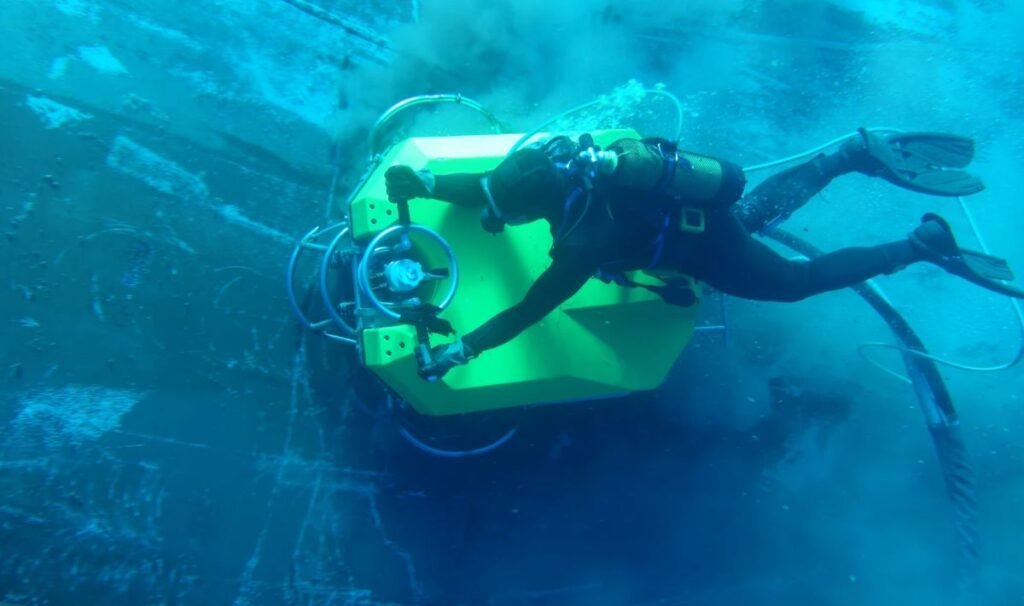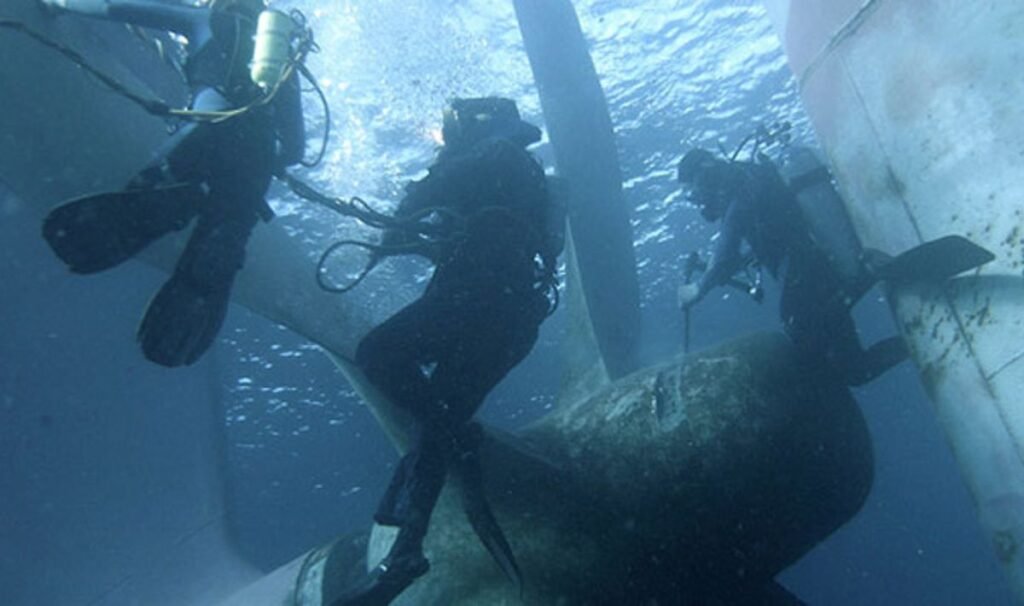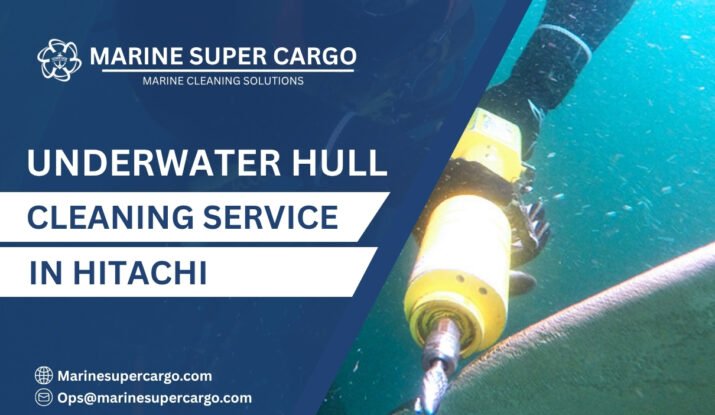Imagine gliding through the pristine waters off Hitachi, Japan, your vessel cutting smoothly through the ocean. Beneath the surface, however, biofouling lurks—barnacles, algae, and marine organisms silently building up on your hull, slowing you down and quietly driving up your fuel consumption. That’s where underwater hull cleaning in Hitachi becomes a game-changer. It’s more than maintenance; it is the key to optimal performance, environmental compliance, and long-term savings.
Understanding Biofouling in Hitachi’s Waters
Hitachi’s coastal waters come alive with marine biodiversity, but this richness also invites biofouling. Warm temperatures and nutrient influx spur growth on submerged surfaces. This biological buildup, if ignored, creates drag—like trying to swim while wearing a heavy wetsuit. The consequences? Reduced speed, higher fuel burn, engine strain, increased emissions, and possible damage to hull coatings. Particularly for vessels operating long-term or in busy commercial ports, managing biofouling is essential.
How Often Should You Schedule Underwater Hull Cleaning in Hitachi?
Frequency depends on vessel type, activity, and water conditions, but a solid rule of thumb is cleaning every 3 to 6 months. Commercial ships and yachts that remain moored or sail regularly in fouling-prone areas often clean every 2 to 3 months. New or specialized antifouling paints can reduce frequency, but regular inspections remain key. The moment you spot biofilm, slime, or barnacles creeping on your hull, it’s time to schedule your next underwater hull cleaning in Hitachi.

Top Methods for Underwater Hull Cleaning in Hitachi
Diver-Assisted Manual Cleaning
Professional divers are often the first choice when careful, precise hull cleaning is needed. Equipped with rotary brushes, scrapers, and soft tools tailored to protect antifouling coatings, they expertly remove marine growth from hulls, propellers, rudders, and sea chests. Along with the physical cleaning, divers inspect the hull for damage, corrosion, or loose fittings.
Robotic and Automated Cleaning Technologies
Hitachi is also embracing the rise of underwater robotics. Remotely operated vehicles (ROVs) fitted with brushes and water jets clean hulls methodically and efficiently without risking diver safety. Advanced models even capture the debris and biofouling removed, minimizing environmental impact. These systems excel on large commercial ships and busy schedules, allowing cleaning while vessels remain in port or at anchor.
High-Pressure Water Jets and Innovative Solutions
For stubborn growth or industrial cleaning, high-pressure water jets are used carefully to blast biofouling off without damaging coatings. When combined with filtration systems, this method keeps water clean and maintains regulatory compliance.
Choosing the Right Service of Underwater Hull Cleaning in Hitachi
Choosing the right provider is vital. Look for:
- Certified divers or ROV operators with experience in Hitachi waters.
- Use of eco-friendly cleaning technologies with debris capture.
- Transparent pricing and detailed inspection reports.
- Compliance with local and international maritime regulations.
- Positive reviews and a proven track record with vessels like yours.
Reliable firms will provide tailored solutions based on vessel size, antifouling type, and operational demands.
A Step-by-Step Look at the Process of Underwater Hull Cleaning in Hitachi
- Initial Inspection: Divers or ROVs assess the hull’s fouling level, focusing on paint integrity and problem areas.
- Setup: Safety measures are established—equipment checked, port notifications handled.
- Cleaning: The hull is cleaned in sections using appropriate brushes or jets, paying special attention to props and intakes.
- Debris Management: Fouling is removed using vacuum or filtration systems to prevent polluting Hitachi’s waters.
- Post-Clean Review: The hull is inspected for missed spots or damage, with photos or videos provided to you.
- Reporting: You receive a comprehensive report and recommendations for ongoing maintenance.
Benefits of Regular Underwater Hull Cleaning in Hitachi
Enhanced Speed and Fuel Efficiency
Biofouling dramatically increases drag. Removing it restores your vessel’s sleek hydrodynamics, cutting fuel consumption by up to 15% and boosting speed—real gains on every voyage.
Environmental Responsibility and Compliance
Routine cleaning helps prevent the spread of invasive species and reduces pollutants in coastal waters. Most providers now use dustless or debris-capturing tech, keeping operations above board with ports and environmental laws. Compliance is increasingly aligned with international standards such as those set by the International Maritime Organization (IMO).
Prolonged Vessel and Hull Lifespan
Fouling accelerates corrosion and hull coating degradation. By cleaning regularly, you protect your investment, extend dry-dock intervals, and avoid costly repairs.
Safety, Regulations, and Environmental Standards in Hiroshima
Hiroshima follows strict maritime standards, requiring certified divers and approved technologies for hull cleaning. Environmental laws mandate careful capture of any paint or biofouling removed during cleaning to protect the marine ecosystem. Providers must adhere to guidelines from the Japan Coast Guard (MLIT) and international standards to avoid penalties and keep port operations smooth.
Typical Costs of Underwater Hull Cleaning in Hitachi
Costs vary based on size and fouling levels:
- Small vessels and yachts: ¥30,000–¥80,000 per clean
- Commercial vessels: ¥100,000–¥500,000+ depending on complexity, tools, and scheduling
Annual contracts or repeat cleaning plans offer better long-term pricing and scheduling convenience.

How to Prepare Your Vessel for Underwater Hull Cleaning in Hitachi
- Inform service providers about recent maintenance and paint status.
- Clear loose gear from the hull vicinity.
- Close underwater openings to prevent water ingress.
- Coordinate with the marina and port authorities early.
- Maintain a hull maintenance log for reference.
The Future: New Trends and Technologies in Hull Maintenance
Hitachi is witnessing adoption of AI-enabled hull inspection drones, robotic cleaning advancements, and eco-conscious antifouling materials. Data-driven hull health monitoring is emerging, helping captains plan maintenance with precision, reduce costs, and minimize environmental impact.
Conclusion
Underwater hull cleaning in Hitachi is your vessel’s secret weapon for speed, savings, and sustainability. By trusting professional cleaners, embracing new technology, and maintaining consistent schedules, you can navigate the beautiful waters of Japan smarter, faster, and greener. The next time you set sail, rest assured your hull is clean, efficient, and ready for any voyage.
FAQ:
Q1. How often should underwater hull cleaning in Hitachi be done?
Generally, every 3 to 6 months, depending on vessel use and environmental factors.
Q2. Can robotic hull cleaning damage antifouling paint?
When properly calibrated, robotic tools clean effectively without harming antifouling layers.
Q3. Are there regulations guiding hull cleaning in Hitachi?
Yes, cleaning must comply with the Japan Coast Guard and environmental protection, including debris capture.
Q4. What is the cost range for underwater hull cleaning in Hitachi?
Prices vary widely; small crafts start around ¥30,000, while large commercial ships may pay hundreds of thousands of yen.
Q5. Why is regular hull cleaning beneficial?
It reduces fuel consumption, prevents invasive species transport, extends hull life, and keeps vessels compliant and cost-efficient.


